|
|
|
Published
on 27
Mar 2001
|
All rights reserved.
|
|
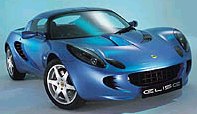 You
can call it "Elise Mk2" like Lotus is doing, but calling it as a
facelift
or mid-life makeover seems more appropriate. The biggest difference
between
new and old Elise is their appearance - while the old Elise’s wild-cat
profile is unchanged, it has received some stylish details from the
M250
show car, such as elliptic eyes, round tail-lights and Nike-style
intakes.
That made it more emotional than the old car. You
can call it "Elise Mk2" like Lotus is doing, but calling it as a
facelift
or mid-life makeover seems more appropriate. The biggest difference
between
new and old Elise is their appearance - while the old Elise’s wild-cat
profile is unchanged, it has received some stylish details from the
M250
show car, such as elliptic eyes, round tail-lights and Nike-style
intakes.
That made it more emotional than the old car.
The
new bodywork also improves aerodynamic downforce by incorporating
ground-effect
diffuser at the bottom of tail. Unlike the previous 111S, rear spoiler
in new Elise is an integral part of the glassfiber body. Moreover, the
body is shaped such that the distribution of downforce coincides with
the
distribution of weight, hence a consistent handling characteristic in
whatever
speed.
Suspension
is the second-most improved element. The old Elise was born in a the
darkest
days of Lotus so that it chose standardised dampers for the benefit of
price. As annual production rose from the originally planned 800 to
3000,
the new Elise can afford a special damper tailor-made by Bilstein,
which
enables spring rates to be stiffened (30% up front and 25% at the rear)
without sacrificing ride comfort. Besides, 10 mm lower ride height,
slightly
wider tracks and revised anti-roll bars are also tweaks made to improve
handling.
 The
innovative aluminium chassis is unchanged. Power plant remains to be
that
K-series displacing 1796 c.c., and it becomes the only choice because
the
more powerful VVC version is no longer available. However, Lotus
rewrote
the engine management program to improve throttle response and by the
way
adds 2 hp and 1 lbft - forget it. In total they are 120 hp and 124
lbft.
Sharper throttle response is undoubted, so is better noise insulation
thanks
to the newly added thin sheet to the firewall. Now the engine feels
less
harsh and sound better - not in Alfa’s league but it won’t be
disgraceful
either. As for the future, I am praying to have a stronger engine,
perhaps
a tuned Mondeo’s 2.0 Duratec HE with 170 hp ? it’s also all-alloy... The
innovative aluminium chassis is unchanged. Power plant remains to be
that
K-series displacing 1796 c.c., and it becomes the only choice because
the
more powerful VVC version is no longer available. However, Lotus
rewrote
the engine management program to improve throttle response and by the
way
adds 2 hp and 1 lbft - forget it. In total they are 120 hp and 124
lbft.
Sharper throttle response is undoubted, so is better noise insulation
thanks
to the newly added thin sheet to the firewall. Now the engine feels
less
harsh and sound better - not in Alfa’s league but it won’t be
disgraceful
either. As for the future, I am praying to have a stronger engine,
perhaps
a tuned Mondeo’s 2.0 Duratec HE with 170 hp ? it’s also all-alloy...
Power
transfers via 111S’s close ratio 5-speeder to Bridgestones RE 040,
another
tailor-made item. Wheels have grown an inch both front and rear, but
the
front tyres measured just 175 in width in contrast to the rear’s 225,
obviously
designed to kill lift-off oversteer but you know, a combination of new
springs, damper, wider track and new tyre compounds might be
unpredictable.
We shall see the outcome in below.
Most
concerned is the important kerb weight. Lotus claimed a new production
technique results in thinner glassfiber body panels thus canceling the
weight gains in other parts. However, our record shows that the 750 kg
new Elise is actually 27 kg heavier than the early Mk1. This inevitably
worsen acceleration a little bit.
On
The Road
Although
Lotus says the cockpit is better trimmed - such as adding plastic cover
to sills (I’d rather have the aluminium sills exposed like the old car)
and an easier-to-operate soft roof from sister car Opel Speedster
(still
manual and not all that easy) - it is still by all means spartan. There
is no air bag and no air conditioning. The latter would have been a
nonsense
considering the poor-quality sealing at roof and windows. Lotus still
doesn’t
care much about build quality and this is the biggest obstacle
preventing
it from challenging Porsche. Good luck, M250.
Turn
the key, the engine fires into life. Transmission noise and vibration
disappear,
what leaves is exhaust and induciton noise that you want. Flick the
close
ratio gearbox, gears by gears, hearing the engine revs to 6,500 rpm,
you’ll
feel the reworked engine management brings more eagerness, responding
to
your slightest pedal action. So it must be faster ? no, stop watch
actually
tells you that it reaches 60 mph from rest in 5.8 seconds or 0.3 later
than the old one. No matter 0-100 or in-gear acceleration it is also a
bit slower. Only top speed of 124 mph levels with the outgoing car.
 Never
mind, because this is already a very quick roadster, trailing just
Boxster
S, S2000 and Opel Speedster (for higher speed acceleration). After all,
the fun of driving roadster depends on subjective feeling rather than
scientific
data. In this respect, the Elise is hard to beat, especially it handles
so good in corners. It’s no secret that the original Elise is the King
of handling, but the new Elise has improved on that solid basis and
cured
the only flaws: lift-off oversteer. The old Elise rode on Pirelli
P-Zero
whose stiff sidewall required softer springs for compensation. It meant
the Elise changed direction brilliantly and didn’t understeer but when
the driver back off mid-corner, the tail runs wide. Never
mind, because this is already a very quick roadster, trailing just
Boxster
S, S2000 and Opel Speedster (for higher speed acceleration). After all,
the fun of driving roadster depends on subjective feeling rather than
scientific
data. In this respect, the Elise is hard to beat, especially it handles
so good in corners. It’s no secret that the original Elise is the King
of handling, but the new Elise has improved on that solid basis and
cured
the only flaws: lift-off oversteer. The old Elise rode on Pirelli
P-Zero
whose stiff sidewall required softer springs for compensation. It meant
the Elise changed direction brilliantly and didn’t understeer but when
the driver back off mid-corner, the tail runs wide.
New
Elise has soft-sidewall RE 020 and stiff springs, the nightmare has
gone.
It corners at higher limit and in a predictable manner. When you enter
a bend too fast and back off, the nose will tighten its line. On the
other
hand, high speed cornering is a lot more reassuring, thanks to real
downforce
generated.
There
is probably no other cars in the world could be more involving to
handle
(well, perhaps the unusual 340R could be). Think about it: a
mid-engined
sports car weighing just 3-quarter of a ton, with all wheels riding on
double wishbones suspensions, steering rack is unassisted (thanks to
little
load on front wheels).... these results in a highly controllable
handling.
In particular, the uncorrupted steering feel remains to be the biggest
advantage of the car. It is perfectly weighted and gives the driver
flows
of information about grip level. The car is so agile that it goes to
wherever
you point. On the other hand, as always, it rides with amazing
suppleness
- we are not talking by sports car’s standard but also by sedan’s
standard.
You see, lightweight is a double-edge sword. I love Chapman !
The
only thing you should avoid in the Elise is trying to slide its tail.
Remember,
62% weight biases towards the rear axle so that going sideway could be
dangerous.
Excitement
wise, nothing could beat the Elise, Porsche Boxster S included. It is
fun
to handle, reasonably quick and affordable. Nevertheless, as a daily
car
few could be worse. It is poorly built, unreliable, spartan and the
company
has a poor reputation about service. But you can’t have a lightweight
roadster
and simultaneously a high quality one. |
Verdict:
     |
Published
on 27
Mar 2001
|
All rights reserved.
|
|
History of Elise Mk1
|
Debuted in
1996, the Elise immediately became the star of the company
and saved it from bankruptcy. The little roadster was named after the
grand daughter of Romano Artioli, the owner of Bugatti and Lotus then.
What made it successful was that it went back to Chapman’s principle of
"weight is your enemy". The car tipped the scale at 723 kg, thanks to
small size, spartan cockpit, lightweight K-series engine and most
important of all an aluminium chassis weighing just 65 kg. The chassis
was supplied by a Norweign metal supplier, Hydro Aluminium. It
pioneered a technology of bonding aluminium parts by epoxy resin and
rivets rather than traditional welding, thus reduced the thickness of
aluminium from 3mm to 1.5mm and save a lot of weight.
Throughout the following 5 years the Elise’s production went up
steadily to over 2,000 cars a year and the 10,000 Elise was built in
early year 2000. Now it has broken the company production record set by
the original Elan. The affordable Elise quickly became the better known
Lotus than the slow-selling Esprit, and it was derived into a big
family consisting of the standard 118 hp Elise, the 143 hp Elise 111S
(using Rover VVC K-series), the SVA-approved Elise Sport (with tuned
K-series 190 hp), the kart-alike 340 R (177 hp tuned K-series) and the
racy Exige (177 hp tuned K-series as well). Besides, some upgrade kits
were provided to create Elise Sport 135 and Sport 160, both named after
horsepower. |
Published
on 11
Jun 2002
|
All rights reserved.
|
|
Elise 111
|
New
Elise 111 looks like
the old one in spec. sheet - it is basically a standard Elise equipped
with the VVC (variable valve control) version of the Rover K-series
engine, offering considerably more punch hence performance. But there
are a number of differences. Most obvious is the new iteration of the
1796c.c. VVC engine which produces 160hp in both MG Rover’s models and
the Lotus, a 15hp increment from the Series 1 Elise 111S or a full 40hp
more than the standard Elise. This lead to a claimed 5.1 seconds and
14.0 seconds for 0-60mph and 0-100mph respectively. Lotus’ official
figures for the Elise were usually wild, but the claim that the new 111
is 0.4 second quicker than the standard Elise to 60mph and 2.7sec
quicker to 100mph should give you a clearer view. That said, up to
100mph it is no slower than Porsche Boxster S.
Surprisingly, the new VVC engine has a very well manner, not only
quieter but also less peaky than the old VVC as well as the standard
120hp engine. Not even the MG Rover version can match its wide spread
of torque which produce 90% maximum torque across 70% of rev range. On
paper, the max torque of 129 lbft is just 5 more than the standard car,
but on road the difference is more than that - you feel the extra
mid-range torque so that you can upshift earlier. In the old VVC you
had to wind the engine to sky-high rpm to squeeze out the extra power,
accompany with unhappy noise. The new VVC engine emits a deeper,
special-tuned exhaust note which sounds better to ears while passing
noise regulation. What did Lotus do to the engine? a new management
program, variable back-pressure exhaust, larger intake ports and
throttle body. That’s all.
The 5-speed gearbox also received revised ratios - closer for the first
2 ratios and longer for the remaining. This sharpen low speed response
a bit while reducing noise and fuel consumption when cruising. No
wonder the latter improved from 38.1 to 40.9mpg. Combining the new
engine and gearbox, the Elise 111 is actually more mature and refined
to drive than the standard Elise, despite of the stronger performance.
Conventional wisdom doesn’t work in this case.
Because the Series 2 Elise has a chassis so capable, the VVC version
does not need any tweak to suspensions, tyres and brakes at all. It
just received a set of lighter alloy wheels and a more effective rear
diffuser. All the goodies of handling and ride mentioned in the
standard Elise report above apply to the 111.
Apart from 111, Lotus is also selling a more expensive 111S alongside.
However, the "S" is rather misleading because it actually offers extra
equipment such as an improved sound system, carpet, leather trim and
Alcantara seats. Theoretically it is actually a less sportier choice
than the 111. |
Verdict:      |
Published
on 6
Mar 2004
|
All rights reserved.
|
|
Elise 111R / US-spec Elise
|
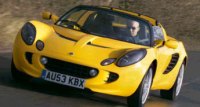 Ever
since its birth in 1996, all the 17,000 Elises built so far were
powered
by Rover’s K-series 1.8-litre engine. The K-series was renowned for
compact
and lightweight, and more important to Lotus, it is built in UK and is
therefore easily available. Unfortunately, the K-series engine does not
comply with the emission regulations in USA because MG Rover does not
sell
cars there. In order to let the Elise to enter the largest sports car
market
in the world, Lotus decided to find another engine. They first
contacted
Honda for its 2.0-litre i-VTEC engine, but it was Toyota who eventually
agreed to supply its 1.8-litre VVTL-i engine to Lotus, together with a
6-speed gearbox. Yes, the combo is the one currently serving Celica GTS
in the United States. Ever
since its birth in 1996, all the 17,000 Elises built so far were
powered
by Rover’s K-series 1.8-litre engine. The K-series was renowned for
compact
and lightweight, and more important to Lotus, it is built in UK and is
therefore easily available. Unfortunately, the K-series engine does not
comply with the emission regulations in USA because MG Rover does not
sell
cars there. In order to let the Elise to enter the largest sports car
market
in the world, Lotus decided to find another engine. They first
contacted
Honda for its 2.0-litre i-VTEC engine, but it was Toyota who eventually
agreed to supply its 1.8-litre VVTL-i engine to Lotus, together with a
6-speed gearbox. Yes, the combo is the one currently serving Celica GTS
in the United States.
In DIN
rating,
the Toyota
engine pumps out 192 horsepower at a sky-high 7800rpm. That’s 32hp more
than the K-series VVC engine. Both engines rely on variable valve
timing
to achieve high efficiency, but their mechanisms are different. Rover
VVC
can infinitely alters intake timing as well as duration. Toyota VVTL-i
alters cam timing infinitely, but it can switch to a more aggressive
set
of cams at high rev, thus increasing valve lift hence breathing. This
accounts
for the extra horsepower it generates. On the downside, the VVTL-i
engine
has a 2-stage power delivery - at regular speed it feels nothing
special,
once after the changeover point at 6200rpm it goes wild. Therefore
Lotus
had to rewrite the management system by itself to smoothen the
transition
region.
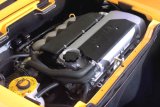 The
1.8 VVTL-i is a peaky engine. Its maximum torque of 133 lbft (just
4lbft
more than the K-series VVC) is not reached until 6,800rpm, where most
other
engines already has their rev limiters cut in. Below 6200rpm, its
advantage
over the K-series VVC is almost non-existent, but fortunately, the
Elise
is 330kg lighter than the Celica thus picks up rev much more quickly.
If
you are prepared to have fun, you will find the exotic power band
easily
accessible. Once entered the last 2,000 rpm, the engine pulls strongly
and cleanly, delivering another level of performance. The
1.8 VVTL-i is a peaky engine. Its maximum torque of 133 lbft (just
4lbft
more than the K-series VVC) is not reached until 6,800rpm, where most
other
engines already has their rev limiters cut in. Below 6200rpm, its
advantage
over the K-series VVC is almost non-existent, but fortunately, the
Elise
is 330kg lighter than the Celica thus picks up rev much more quickly.
If
you are prepared to have fun, you will find the exotic power band
easily
accessible. Once entered the last 2,000 rpm, the engine pulls strongly
and cleanly, delivering another level of performance.
The
C64 six-speed
gearbox
is a joy to use. Not only provides one more ratio than the Rover unit,
its gearshift is quick and slick, far more satisfying than the old
gearbox.
Even if you are not in a mood to exploit the revvy engine, you will
definitely
enjoy the Toyota powertrain purely due to the beautiful gearshift.
The
Toyota
engine
and gearbox
might started life in the Federal Elise project, but it vapored into
the
European Elise 111R as well. Now the Elise 111R sits above the 160hp
Elise
111S and the 120hp standard Elise. Compare with the US-spec Elise, the
111R is sportier, with stiffer suspension setup and less burdening with
equipment (such as airbag and air-con). Despite that, it is still more
luxurious than lesser Elises, as it has ABS system (first ever to
Elise),
central locking and standard audio system. Besides, the Toyota engine
together
with 6-speed gearbox is 36kg heavier than the K-series VVC with
5-speeder.
As a result, the 111R is also the heaviest Elise by a lot. It tips the
scale at 860kg, compare with 806kg of the 111S, 780kg of the
stripped-out
111 and 750kg of the standard Elise.
Anyway,
with
32
more horsepower
and a 6-speed gearbox, the 111R is capable to accelerate from rest to
60mph
in 4.9 sec and then 100mph in 13 second flat, the latter is 1.5 sec
quicker
than the VVC-engine 111. More important, the top Elise finally has a
superb
engine and gearbox to match its superb chassis. It is now as quick as
sister
car Opel Speedster Turbo (Vauxhall VX220 Turbo), just being sharper,
more
agile, more responsive and more involving to drive. Flyweight sports
cars
never come this good. |
Verdict:     |
Published
on 4
Aug 2006
|
All rights reserved.
|
|
Elise S - the new base model
|
 When
Lotus gave birth to
Elise
in 1996, it intended to make it a performance bargain. Therefore the
car was made small, simple and powered by a small engine to enable a
price of just under £20,000. As it became popular, inevitably,
Lotus started increasing its power and price to raise profit margin.
Today, the Toyota VVTL-i-powered Elise 111R (now called Elise R) is
sold at close to £30,000, closer to Porsche Boxster territory and
moving away from the philosophy of the original car. When
Lotus gave birth to
Elise
in 1996, it intended to make it a performance bargain. Therefore the
car was made small, simple and powered by a small engine to enable a
price of just under £20,000. As it became popular, inevitably,
Lotus started increasing its power and price to raise profit margin.
Today, the Toyota VVTL-i-powered Elise 111R (now called Elise R) is
sold at close to £30,000, closer to Porsche Boxster territory and
moving away from the philosophy of the original car.
Recently there are some changes in Lotus. In May 2006, Kim
Ogaard-Nielsen resigned and left his CEO position to Mike Kimberly, a
22-year Lotus veteran and worked as CEO for 8 years since the death of
Colin Chapman. Soon, we saw the "new Esprit" project accelerated and
then the introduction of Elise S, the new entry level Lotus. It is
priced at only £24,000, closer to the £19,000 Mazda MX-5
than the £33,000 entry-level Porsche Boxster. It signals a new
direction for Lotus: on the one hand, it moves to the mid-price segment
with Europa S and high price segment with new Esprit; on the other
hand, it retakes the low price segment once left to Mazda MX-5. This
mean Lotus will appeal to wider audiences and hopefully will improve
financial stability.
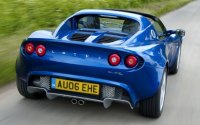 Technically, Elise S is very
simple. You can see it as a
111R with its
VVTL-i engine replaced with the cheaper, fixed-valve-lift VVT-i engine
and a 5-speed manual box instead of 6-speeder.
This sounds too simple to be believed, but it is true. In other words,
the chassis, suspension setting, tires, wheels and brakes are all
unchanged from the more powerful car. The VVT-i engine might lose 56
horsepower to VVTL-i (that is, 136hp vs 192hp), but in real world the
difference is negligible, because everybody knows the variable-lift
engine is peaky and needs to be worked very hard to deliver its
performance advantage. In fact, if you leave the rev at low to
mid-range, the VVT-i engine is actually more flexible. It just loses
the extra horsepower at the very top end. The car goes from 0 to 60 mph
in 5.8 seconds, still significantly faster than any roadsters at
comparable price. Technically, Elise S is very
simple. You can see it as a
111R with its
VVTL-i engine replaced with the cheaper, fixed-valve-lift VVT-i engine
and a 5-speed manual box instead of 6-speeder.
This sounds too simple to be believed, but it is true. In other words,
the chassis, suspension setting, tires, wheels and brakes are all
unchanged from the more powerful car. The VVT-i engine might lose 56
horsepower to VVTL-i (that is, 136hp vs 192hp), but in real world the
difference is negligible, because everybody knows the variable-lift
engine is peaky and needs to be worked very hard to deliver its
performance advantage. In fact, if you leave the rev at low to
mid-range, the VVT-i engine is actually more flexible. It just loses
the extra horsepower at the very top end. The car goes from 0 to 60 mph
in 5.8 seconds, still significantly faster than any roadsters at
comparable price.
Perhaps the best news is Elise S possesses the same first class
handling as 111R, because virtually everything other than the engine is
the same. This make the £6,000 price difference very appealing.
Undoubtedly, the standard Toyota VVT-i engine is not that much cheaper
than the Yamaha-built VVTL-i engine, so obviously Lotus reduced its
profit margin in the Elise S. To the fans of Lotus, what can be better
than this? |
Verdict:      |
Published
on 23
Jan 2008
|
All rights reserved.
|
|
Elise SC
|
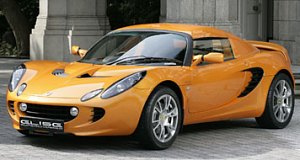
|
Almost same old look as before...
|
Since
the very beginning
Lotus
Elise has two major faults: Fault One, a bare cockpit; Fault Two,
engine lacks torque. For the first fault there won't be any solutions
as long as Elise sticks to its lightweight philosophy. For the second
problem, the new top-of-the-range model Elise SC provides an answer:
supercharging.
Supercharging is not a new idea to the Elise family, as its sister car
Exige S already employed this technology to improve power and torque.
However, the supercharger being used in Elise SC is different. Built by
Magnuson based on the Eaton unit, it employs a smaller rotor and run at
a lower boost pressure. It integrates with the intake manifold plenum
and does without an intercooler. As a result, the unit is 8 kg lighter,
smaller and therefore doesn't block rearward view as in Exige S. The
lack of intercooler means it is not as good as a track days machine,
but in road trim it has virtually no difference in output - we are
talking about 220 horsepower and 156 lb-ft of torque. Compare with the
naturally aspirated Toyota 1.8 VVTL-i engine from which it is derived,
it gains 28 horsepower and 24 lb-ft of torque. The torque curve is
noticeably improved. Instead of 6,800 rpm, the peak torque now arrives
at a much more usable 5,000 rpm.
Lotus claims the Elise SC can top 150 mph (which is easy), accelerate
from 0-60 mph in 4.4 seconds and 0-100 mph in 10.7 seconds. Considering
an Exige S has been proved by Car and Driver as capable of completing
0-60 in 4.1 sec and 0-100 in 11.1 sec, the even lighter Elise SC has a
good chance of meeting the factory targets. Of course, that is a lot
faster than the naturally aspirated version.
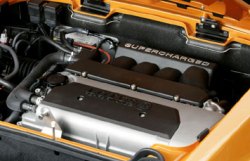
|
The main difference lies here: a
supercharger sans intercooler
|
On the road, the supercharged engine does not feel terribly torquey at
the bottom end - by no means like a muscle car - but the delivery is
far more progressive than the normally aspirated 1.8 VVTL-i engine and
mid-range punch is noticeably stronger. On the one hand it is more
relaxing to drive in regular traffic, on the other hand it remains
eager to rev beyond 8,000 rpm. In addition to the stronger overtaking
ability, the £4,000 additional price is worthwhile.
Apart from a new rear spoiler, other aspects of the car are mostly
unchanged from the Elise R. Best of all, it keeps the first-class
handling, the highly inspiring driving experience and the fine ride
quality intact. The Elise SC is still the most entertaining compact
sports car on the market. Now with stronger performance and better
drivability, it becomes even more attractive.
|
Verdict:      |
Published
on 25
Apr 2010
|
All rights reserved.
|
|
Elise 2010 facelift and Elise 1.6
|
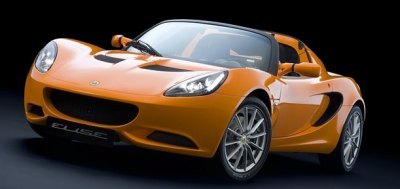
|
Elise 1.6 is the greenest performance
roadster in the market
|
Mid-life
facelift normally comes at the third or fourth model year. However, the
progress at Lotus is much slower than the industrial norm. The current
Elise has been around for 9 years - or 14 years if you take into
account the fundamentally similar Mk1 - and its first facelift has just
arrived this spring. This shows Lotus is short of money to do proper
update, but it also proves that the Elise is still highly competitive
in the marketplace. Until this day, no other lightweight sports car is
more fun to drive.
Also because of the above reason, the 2010 facelift is very subtle.
Basically, all the chassis setup, no matter suspensions, steering,
brakes and tires are left untouched. The cockpit remains the same, too.
Ditto the 192hp powertrain of Elise R. The entry-level 1.8 VVT-i engine
has been replaced by a smaller 1.6 Valvematic engine, and its
partnering 5-speed gearbox gives place to a 6-speeder. Outside, the
front end styling has been tweaked to resemble Evora, and by the way to
reduce drag by 4 percent. New headlights bring LED daytime running
lights. The engine lid has been reshaped to house the taller engine
(due to the Valvematic mechanism). Rear diffusers have also been
revised. In short, nothing big news.
Lotus said the new entry-level model, now called Elise instead of Elise
S, is a lot greener. Thanks to the combination of an extra gear ratio
and the smaller and throttleless Valvematic engine, its carbon-dioxide
emission has been reduced from 179 to 149 gram per kilometer, making it
the greenest performance roadster in the world - assuming you ignore
Tesla. Its fuel consumption has been improved to an incredible 45 mpg.
That's not far behind many superminis !
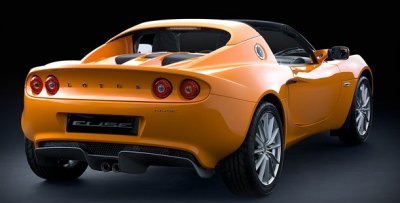 |
Unfortunately, no one buys Elise for
low emission and consumption.
|
Unfortunately, no one buys Elise for low emission and consumption.
Judge it by the usual standard of performance, the 1.6 engine is no
match with the outgoing 1.8 VVT-i, sadly. Although both produce the
same 136 horsepower, the smaller engine is not as torquey, especially
under 4000 rpm. This mean you have to use a lower gear and work harder
than before to deliver the necessary performance. The official
performance figures also said it takes 6.0 seconds to go from zero to
sixty, two-tenths longer than the old car.
Not only less punchy, the 1.6 engine is taller and heavier than the
1.8. So what's the point of changing engine ?
Theoretically, the infinitely variable valve lift of Valvematic engine
may take its revability approaching the level of the 1.8 VVTL-i unit of
Elise R, but in fact the 1.6-liter 1ZR-FAE comes from Toyota Avensis,
which is tuned for fuel economy and refinement. So its redline is set
at a disappointing 7000 rpm.
On the plus side, the facelifted Elise has its cable-operated
gearchange improved, with less slack to allow cleaner shifts.
Overall, the 2010 facelift is a disappointment. It brings too little
improvement to the Elise R and even a drop in performance and
tractability to the entry-level car. It is rather unnecessary.
|
Verdict:     |
Published
on 4
May 2012
|
All rights reserved.
|
|
Elise S (1.8 supercharged)
|
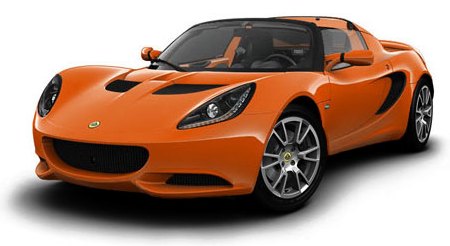
Since the demise of
Esprit, Lotus has not been building its own engines. For a low-volume
maker, outsourcing engines might make more sense financially, but it
also creates a lot of problems. Without controlling the supply in your
own hands, it is impossible to guarantee continuous availability, let
alone continuous development. Take the Elise for example, when MG Rover
collapsed, supply of its 1.8-liter K-series engine dried out. It had to
switch to Toyota engines, whose extra weight hurts its handling
a bit. However, not even the Japanese giant can guarantee a stable
supply because itself has different needs and interests. By the time
EU5 emission came into force at the beginning of this year, its
high-revving 2ZZ-GE (VVTL-i) engine had to retire, leaving only the
entry-level 1.6 Valvematic engine to serve the Elise.
After a few months of wait, Elise is finally available with an
appropriate engine again. Based on Toyota Corolla's 2ZR-FE, Lotus has
derived a 1.8-liter supercharged engine which is fully EU5 compliant.
It produces the same 220 horsepower as the old supercharged 2ZZ-GE on
Elise SC, and significantly more torque at 184 lbft against 156 lbft.
Moreover, the power delivery is a lot less peaky, with the peak power
and torque points lowered from 8000 rpm to 6800 rpm and 5000 rpm to
4600 rpm respectively. At 3000 rpm, the new engine produces 166 lbft of
torque, compare with only 125 lbft on the old unit. That makes a big
difference to real-world tractability ! As for outright performance,
Lotus claims 0-60 and 0-100 mph can be achieved in 4.2 and 11.2 seconds
respectively. Traditionally, we found its figures very difficult to
replicate, but still it is no question that the new Elise S is a very
quick car, one that eats the base Porsche Boxster for breakfast.
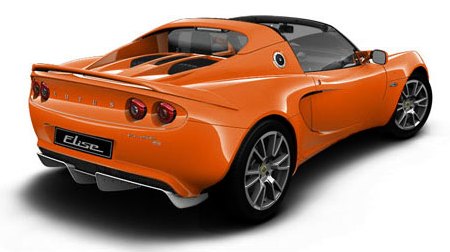
The new found low-end and mid-range improvement is due to the fact that
the 2ZR-FE engine uses more undersquare combustion chambers (80.5 x 88
mm), its lack of variable valve lift mechanism and a new Magnuson R900
supercharger. The old SC engine also used a Magnuson supercharger, but
that unit was derived from the internals of Eaton M45 with 3-lobe
rotors. Instead, the new supercharger uses Eaton TVS 4-lobe rotors to
allow higher pumping efficiency and flow rate, therefore compensating
the base engine's weaker top-end output. As before, Magnuson's work is
mainly to repackage the supercharger so that it fits into the small
engine bay of Elise.
On the road, the new-found mid-range punch is easily noticeable. It
allows the Elise S to pick up speed more quickly in straight line
acceleration or when exiting bends. Ease of drive is improved by the
fact that it now requires less work on gearshift. With more torque to
play with, it also makes the Elise' tail more alive in bends. On the
downside, the engine loses the frantic manner of revving to 8000 rpm.
Aurally, the old engine was definitely more thrilling.
The rest of the car is virtually the same as the lesser 1.6 model (the
only change is the additional rear spoiler). Not even the suspension or
tires have been altered. However, considering the car has always been
praised for superb handling and communication, there is really no need
to change. Our only criticisms remain to be the
spartan interior and the rough packaging, both remind us that the Elise
S2 is already 11 years old. |
   
|
Published
on 15
Jan 2015
|
All rights reserved.
|
|
Elise S Cup
|
|
Since DRB-Hicom took
over Proton and sacked Dany Bahar, Lotus has been put in idling state.
Its new Esprit and other 5 new models are cancelled. Its workforce has
been cut by a quarter. New CEO Jean-Marc Gales wants to stop losing
money by cutting costs and increasing dealerships, but how to attract
new orders based on the aging line-up is really questionable. The Elise
Mk2 has been around for 14 years without any significant updates. Even
the last minor change, i.e. the supercharged Elise S, was introduced
nearly 3 years ago. For a company selling halo cars, lack of press
attraction could be fatal. However, without getting any cash injection
from its mother company, Jean-Marc Gales has very limited options. One
of them is to reuse the existing racing parts, mix and match them to
create new editions.
In recent years, Hethel increasingly relies on sales to club racers. As
a road car, Elise is too Spartan to compete with Porsche Boxster and
Cayman etc. As a road and track dual-purpose car, however, it still has
plenty of life. The new Elise S Cup is a testament. Basically, it is
the road-legal version of Elise S Cup R race car, with full aero kits
to generate useful downforce at track speed. At 100 mph, it produces 66
kg of downforce, compared with 5 kg of the regular Elise. At 124 mph
(200 km/h) this rises to 104 kg. This enables the car to be 3 seconds
faster lapping Lotus’ own test track at Hethel. The aggressive
spoilers, skirts, front splitters, winglets and diffusers also improve
the looks of the car. At least Lotus has something different from
mainstream sports cars.
Disappointingly, Lotus has no budget to rework the engine, so it
remains to be that 1.8-liter supercharged four, derived from Toyota's
Dual-VVT-i unit and added with a supercharger. 220 horsepower and 184
pound-foot of max. torque are not spectacular these days. Lotus quotes
0-60 mph as 4.2 seconds, which is faster than how the car actually
feels on the road. Owing to increased drag, top speed is lowered by 5
mph to 140 mph. As before, the engine output is linear, and it is
willing to spin to 7000 rpm, but the noise it makes is not particularly
interesting.
Apart from aero package, the Elise S Cup gets slightly stiffer
suspension setup and adjustable front anti-roll bar. It is not as
uncompromising as you might think, because the regular Elise has always
been renowned for a supple ride. A large part of this compliance is
carried over to the S Cup, so it is still highly useable on B-roads.
Elsewhere, the chassis remains the same as before. It carries over the
sweet unassisted steering and strong yet well-modulated brakes. On
narrow country roads, there are still very few cars could match its
speed and interactive handling. Weighing in less than 1 ton and spans
only 1719 mm across its shoulders, the Elise is incredibly agile.
However, you can say the same to the lesser Elises. The S Cup needs a
proper racing track to excel. Only on a track you can find enough
cornering speed to generate downforce, pressing the car harder on the
road for superior cornering prowess. Due to short wheelbase and track
widths, the Elise pitches and rolls more in corners or under braking
than larger sports cars, but its attitude is easily controllable by
throttle and steering. This is still a great driver's car.
Unfortunately, the S Cup is quite expensive. It costs nearly 20 percent
more than the Elise S with the same motor, and you need extra cash to
get air-con, stereo and proper sound insulation. This lifts it to the
level of Porsche Boxster S, which offers a lot more comfort, technology
and quality. Club racing is never cheap.
|
   
|
Published
on 25
May 2016
|
All rights reserved.
|
|
Elise Cup 250
|
|
Another faster, more
track-focused version of Lotus Elise. Cup 250 is developed from last
year’s Elise S Cup and replaces the latter. Outside, you can hardly
spot any differences as it carries the same aero kits that produce 66
kg of downforce at 100 mph. However, there is actually a key
difference: it employs soft top instead of hard roof panel just because
it saves weight. You may also convert the aero kits to carbon-fiber
items to save a further 10 kg, but this costs an absurd £4000, so
don’t expect many to opt for it. Behind the driver, the familiar Toyota
1.8 VVT-i engine gets a power boost from 220 to 246 hp. This is
achieved by using a smaller pulley to turn the supercharger faster. The
ECU is remapped to meet its new duty, of course. Peak torque remains at
184 lbft, but it is now available at a wider band, from 3500 to 5000
rpm.
Although more weight is shed by using lithium battery (-10kg),
carbon-fiber seats (-6kg) and forged alloy wheels (-1.5kg), the whole
car is just 1 kg lighter than its predecessor. At 931 kg, it is
actually heavier than the Euro-spec Alfa Romeo 4C. Anyway, the more
powerful engine is already enough to quicken its 0-60 mph acceleration
to 3.9 seconds and raises its top speed to 154 mph. It goes without
saying this is the fastest ever Elise, not only on straight but also on
Hethel track, where it is 4 seconds a lap quicker than its predecessor.
Now it is nearly as serious as Exige as a track car.
On the road, the extra power is welcomed, especially when it gains
eagerness towards the top end. In fact, the peak power is now delivered
400 rpm higher at 7200 rpm, and the 4-cylinder feels noticeably
stronger than before from 6500 rpm upward. The centrifugal blower
results in a power delivery far more linear than turbocharged engines.
This means it never feels as punchy as Alfa 4C or new Porsche 718
turbo, but it encourages you to rev it to redline and extract the last
drop of power like a good old Alfa twin-cam or Porsche boxer. At lower
revs, its response is instant, without the soft throttle response of
turbo engines. What a pity the exhaust note is thin and civilized.
Lotus has reworked the gearshift linkage of the 6-speed manual.
Although it’s no Honda or Mazda-slick, the shift action is much
improved, quicker, lighter and more positive. Gear ratios are well
matched with the engine output.
The most important change to the chassis is a set of wider front tires.
The track-oriented Yokohama A048 rubbers grow from 175/55VR16 to
195/50ZR16, accompanied with the necessary suspension geometry retune.
This results in more front end grip, less understeer in corner and
accounts for a large part of the improved lap time. In fact, the Cup
250 becomes so grippy that it is difficult to induce oversteer on
throttle lift – it’s still possible, but you have to be aggressive with
throttle and steering mid-corner to do so. However, its balance remains
superb, its unassisted steering remains ultra-feelsome (especially when
everyone else switched to EPS), and the agility brought by its
lightweight and compact size remains unbeatable. Meanwhile, the brakes
with uprated AP calipers are powerful.
Despite of its track pretension, the Elise Cup 250 still rides very
well on country roads, a skill only Lotus can master. It is not going
to be a grand tourer, of course, as the cockpit is bare – there are not
even air-con or radio fitted as standard. Those looking for a proper
road car should turn to Porsche instead. However, as a second car for
trackdays or Sunday blasts in countryside, the compact yet very fast
Cup 250 is a good alternative to the late Cayman GT4, or a cheaper
alternative to Lotus’ own Exige S. While it is not going to be a class
leader, this is still a remarkable achievement for a car whose basic
design is 20 years old now.
|
   
|
|
|
|
|
|
|
|
|
|
|
Elise
|
2001
|
| Mid-engined,
RWD |
Aluminum tub
|
Glass-fiber
|
3785 / 1719 / 1143 mm
|
| 2300 mm |
Inline-4 by Rover
|
| 1796 cc |
DOHC 16 valves
|
-
|
| - |
| 120 hp |
| 124 lbft |
5-speed manual
|
All double-wishbones
|
-
|
F: 175/55VR16
R: 225/45VR17
|
750 kg
|
124 mph*
|
5.8*
|
| 17.6* |
|
Elise
111
|
2002
|
| Mid-engined,
RWD |
Aluminum tub
|
Glass-fiber
|
3785 / 1719 / 1143 mm
|
| 2300 mm |
Inline-4 by Rover
|
| 1796 cc |
DOHC 16 valves, VVT
|
-
|
| - |
| 160 hp |
| 129 lbft |
5-speed manual
|
All double-wishbones
|
-
|
F: 175/55VR16
R: 225/45VR17
|
780 kg
|
127 mph*
|
5.0*
|
| 14.5* |
|
Elise
111R / Elise R
|
2004
|
| Mid-engined,
RWD |
Aluminum tub
|
Glass-fiber
|
3785 / 1719 / 1143 mm
|
| 2300 mm |
Inline-4 by Toyota-Yamaha
|
| 1796 cc |
DOHC 16 valves, VVT, VVL
|
-
|
| - |
192 hp / 7800 rpm
|
133 lbft / 6800 rpm
|
6-speed manual
|
All double-wishbones
|
-
|
F: 175/55VR16
R: 225/45VR17
|
860 kg
|
150 mph (c)
|
4.9* / 4.7**
|
| 13.0* / 13.1** |
|
|
|
|
|
Performance
tested by: *Autocar, **R&T
|
|
|
|
|
|
|
Elise
S
|
2006
|
| Mid-engined,
RWD |
Aluminum tub
|
Glass-fiber
|
3785 / 1719 / 1143 mm
|
| 2300 mm |
Inline-4 by Toyota
|
| 1794 cc |
DOHC 16 valves, VVT
|
-
|
| - |
136 hp
|
127 lbft
|
5-speed manual
|
All double-wishbones
|
-
|
F: 175/55VR16
R: 225/45VR17
|
860 kg
|
127 mph (c)
|
5.8 (c)
|
| - |
|
Elise
SC
|
2008
|
| Mid-engined,
RWD |
Aluminum tub
|
Glass-fiber
|
3785 / 1719 / 1143 mm
|
| 2300 mm |
Inline-4 by Toyota-Yamaha
|
| 1796 cc |
DOHC 16 valves, VVT, VVL
|
Supercharger
|
| - |
220 hp / 8000 rpm
|
156 lbft / 5000 rpm
|
6-speed manual
|
All double-wishbones
|
-
|
F: 175/55VR16
R: 225/45VR17
|
903 kg
|
150 mph (c)
|
4.4 (c) / 4.5**
|
| 10.7 (c) / 12.0** |
|
Elise 1.6
|
2010
|
| Mid-engined,
RWD |
Aluminum tub
|
Glass-fiber
|
3824 / 1719 / 1117 mm
|
| 2300 mm |
Inline-4 by Toyota
|
| 1598 cc |
DOHC 16 valves, VVT, VVL
|
-
|
| - |
136 hp / 6700 rpm
|
118 lbft / 4300 rpm
|
6-speed manual
|
All double-wishbones
|
-
|
F: 175/55VR16
R: 225/45VR17
|
876 kg
|
127 mph (c)
|
6.0 (c) / 6.7*
|
| 18.4 (c) / 21.1* |
|
|
|
|
|
Performance
tested by: *Autocar, **C&D
|
|
|
|
|
|
|
Elise S (1.8 SC)
|
2012
|
| Mid-engined,
RWD |
Aluminum tub
|
Glass-fiber
|
3824 / 1719 / 1117 mm
|
| 2300 mm |
Inline-4 by Toyota
|
| 1798 cc |
DOHC 16 valves, DVVT
|
Supercharger
|
| - |
220 hp / 6800 rpm
|
184 lbft / 4600 rpm
|
6-speed manual
|
All double-wishbones
|
-
|
F: 175/55VR16
R: 225/45VR17
|
924 kg
|
145 mph (c)
|
4.2 (c)
|
11.2 (c)
|
|
Elise
S Cup
|
2015
|
| Mid-engined,
RWD |
Aluminum tub
|
Glass-fiber
|
3824 / 1719 / 1117 mm
|
| 2300 mm |
Inline-4 by Toyota
|
| 1798 cc |
DOHC 16 valves, DVVT
|
Supercharger
|
| - |
220 hp / 6800 rpm
|
184 lbft / 4600 rpm
|
6-speed manual
|
All double-wishbones
|
-
|
F: 175/55VR16
R: 225/45VR17
|
932 kg
|
140 mph (c)
|
4.2 (c)
|
-
|
|
Elise Cup 250
|
2016
|
| Mid-engined,
RWD |
Aluminum tub
|
Glass-fiber
|
3824 / 1719 / 1117 mm
|
| 2300 mm |
Inline-4 by Toyota
|
| 1798 cc |
DOHC 16 valves, DVVT
|
Supercharger
|
| - |
246 hp / 7200 rpm
|
184 lbft / 3500-5000 rpm
|
6-speed manual
|
All double-wishbones
|
-
|
F: 195/50ZR16
R: 225/45ZR17
|
931 kg (921kg w/carbon aero)
|
154 mph (c)
|
3.9 (c)
|
-
|
|
|
|
|
|
Performance
tested by: -
|
|
|
|
|
|
|
|
|
Copyright©
1997-2016
by Mark Wan @ AutoZine
|
|